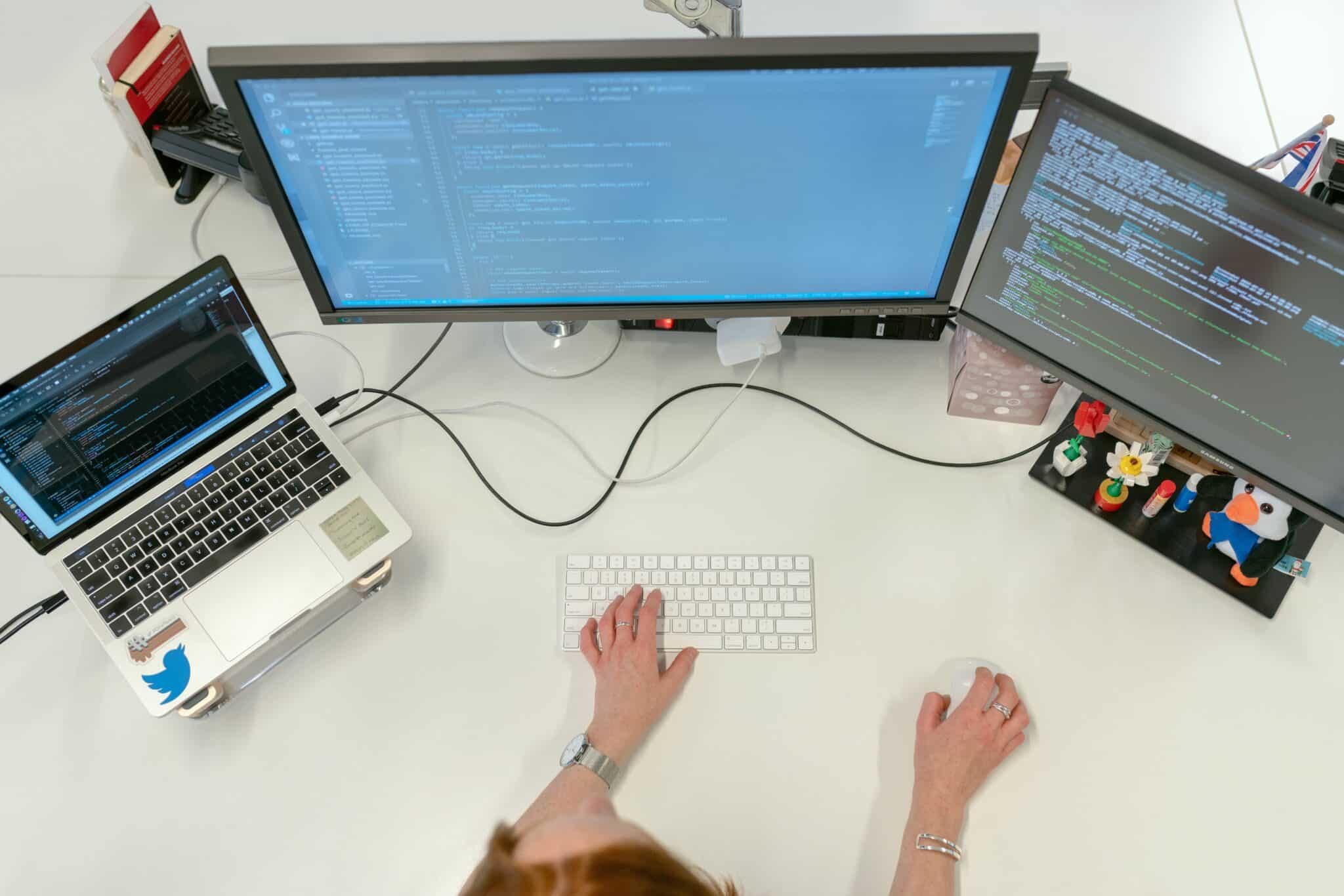Python vs. Java: Which is Better?
Updated: June 19, 2024
Published: December 24, 2021

Just like there are so many languages to choose from to speak in the world, the same can be said about computer programming languages. So, how do you know which is worth learning? Here, we will break down what there is to know regarding Python vs. Java and answer questions like, “Is Python easier than Java?”

What is Java?
Java was created by James Gosling and a team of researchers at Sun Microsystems, Inc., which Oracle has since acquired. It’s an object-oriented programming language that is class-based and considered high-level.
Object-oriented programming languages use objects, rather than functions and logic, to organize software data.
One of Java’s major selling points is that it is cross-platform, making it exceptionally popular. Java lets a developer write one line of code once, which can then be run anywhere.
Some organizations that use Java include: Netflix, Spotify, Google, Airbnb, and Uber.
What is Python?
Python is a bit older than Java as it was released in 1991. Like Java, Python is an object-oriented and high-level programming language.
Python is often judged on its readability, which means that within the Python community, programmers will give each other grades based on this aspect.
Python has a library of open-source code that’s distributed by the Python Software Foundation. This makes it relatively easy to learn and modify based on one’s desired use case. For this reason, Python is like a grab-and-go programming language where developers can search for what they’re looking for, follow the directions, and get building. You can think of it as the Lego of programming.
When to Use Python?
Given its code library, Python is an ideal choice for developing applications rapidly. A lot of beginners opt to learn Python because it is simple in comparison to other coding languages and requires very few lines of code to run, which also makes it speedier to write.
For example, Java needs ten lines of code to read a file, compared with just two that Python requires.
Python is commonly used for:
- Websites and software
- Operating system design
- Mobile applications and frameworks
- Database applications
- Graphics
- Prototyping
- Networking and server-based applications
- Artificial intelligence (i.e., machine learning)
- Data analysis
- Enterprise resource planners
Many applications you likely use on a daily basis are running on Python. For example, Instagram, Netflix, Google, Facebook, Reddit, and Dropbox have Python to thank for their existence.
When to Use Java?
Java’s most common use cases include:
- Desktop computing
- Network applications
- Operating systems design
- Web services
- Graphic user interface (GUI)
- Robotics
- Mobile apps and frameworks
Its platform independence makes it incredibly desirable.
Difference Between Java and Python: Which to Use?
As you can see, both Java and Python have their advantages and long lists of use cases. This is why so many major global organizations depend on these coding languages to run their applications and services.
When comparing Java vs. Python, a few differences and selling points stand out for each. Most developers will agree that one of the major advantages of using Python is its simplicity. It’s typically said to be easier than Java to learn and use.
But, it’s not just about ease of use that makes a language the right choice. Before starting any project, you’ll want to weigh the advantages and disadvantages of the languages you know to help inform your decision.
Python is a great starting point to begin learning coding languages. It’s also a great choice for anyone looking to work in data science and artificial intelligence.
But, once you really dive into coding languages, then you’ll start to see why Java is so powerful and worth knowing, too. Java is a highly efficient language. If speed is a factor in your project, then Java is the better choice.
There’s also the fact that Java uses Java Virtual Machine (JVM) to run. This means that Java programs can run on any mobile device or computer running JVM. On the other hand, Python requires that an interpreter be installed on the machine to translate Python.
Java also works more quickly because Java is a master at concurrency. Concurrency is the ability to execute multiple lines of code at once. On the other hand, Python operates sequentially, moving down the list of lines of code to execute them.
When it comes to troubleshooting lines of code, Python is a lot more simple to “decode” (no pun intended). Java uses static type, and Python uses dynamic type. Dynamic types are shorter and easier to understand. So, if a problem does arise, developers will have an easier time working through the lines of code written in Python over Java.
Disadvantages of Java and Python
It’s essential to consider the disadvantages of coding languages when deciding which to use.
Java
Because Java uses JVM (which can be seen as an upside), developers also have to consider the fact that this requires more memory to run. With more memory can come additional costs because memory and processing power will depend on hardware.
Java also doesn’t allow developers any control over garbage collection, or in simple terms, the ability to use a delete function.
Python
As we mentioned, Python is not the faster coding language for execution because it is interpreted. Also, since it is dynamically typed, there’s more work required to decipher its simple lines of code.
Like Java, Python also uses a lot of memory, which can be a disadvantage if you’re looking to build applications that seek memory optimization. Since it’s relatively slow and memory inefficient, Python isn’t chosen for server-side programming.

Earning Your Degree in Computer Science
If you have an interest in working as a software developer or programmer, having a degree in Computer Science is a massive advantage.
You can accomplish this feat by attending an online university like the University of the People, which offers a tuition-free Computer Science degree.
Here’s what a University of the People Computer Science graduate has to say about his experience in the program.
The Code is at Your FIngertips
Now that you know the basics about Python vs. Java, you can choose which is more fitting for whatever project you have set out in front of you.
If you are just starting to learn how to code, then Python will likely be an easier introduction due to its dynamic type and open-source library of components. If you’re looking to maximize speed and usability, then you’ll likely want to use Java.
Or, get the best of both worlds and learn both Java and Python, so you can really maximize your potential!
